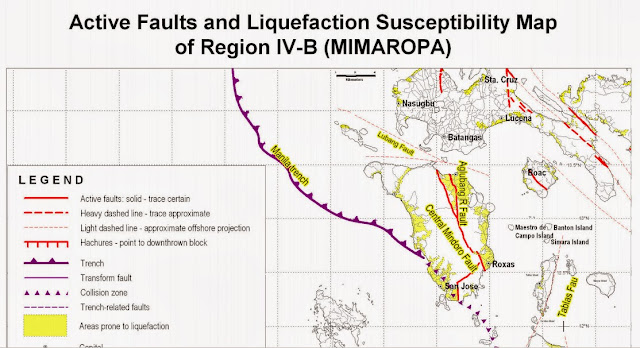 |
| Attorney Gerthie Mayo-Anda and Mrs Naty Nagutom meet in Marinduque for the hearing at the Regional Trial Court. |
At the witness stand, Nanay Natividad “Naty” Nagutom sat comfortably. She appeared unflappable while on cross examination by the lawyers of Marcopper Mining Corporation (“Marcopper”). With great conviction, Nanay Naty testified that because of the December 1993 mining disaster allegedly caused by the Marcopper’s negligence , she and her family lost their sweet potato crops, banana trees, domesticated chickens and water source; suffered ailments caused by toxic mining wastes; and experienced deep anxiety and many sleepless nights among others.
Sixty six (66) years old, a native of Marinduque and a farmer by livelihood, Nanay Naty was the third plaintiff to testify in the case “Rita Natal et al. v. Marcopper Mining Corporation” filed at the Boac trial court, where almost 41 plaintiffs, most of whom are farmers, seek damage compensation from the defendant mining company. The root of this case is the disaster that struck on the 6th of December 1993, when a portion of the Maguila-guila Dam constructed by Marcopper, collapsed and released an overwhelming amount of silted and contaminated water that submerged and destroyed the plaintiffs’ properties, sources of livelihood, exposed them and their families to serious health risks, and virtually obliterated the Mogpog River, leaving it desolate and incapable of substantially supporting any life form. The complainants contend that they had suffered greatly and continue to suffer as a consequence of the company’s willful refusal to close the Maguila-guila Dam and rehabilitate the Mogpog River, which once supported many of their livelihood. Marcopper, on the other hand, denies the allegations of the plaintiffs and contends that the disaster was not caused by their negligence but by the battering of the typhoon “Monang” — allegedly an “act of God”, which led to the collapse of the Maguila-guila dam.
For Nanay Naty who has resided since birth at the banks of the Mogpog River and has ever since depended on the river for her family’s daily food and water needs and for leisure, the 1993 incident was really a traumatic event that has caused and is still causing until now, indescribable anguish and indignation. Not only that the 1993 mining disaster annihilated her family’s crops and farm animals and caused severe damage to their house, but the collapse of the Maguila-guila Dam at around 3:00 in the morning of that fateful day had also put the very lives of Nanay Naty’s children in peril. She recalls that because of the intense flooding that had resulted from the collapse, she and her husband had been forced to tie their small children to some sturdy furniture so they would not be washed away by the raging waters. For Nanay Naty, this was indeed a traumatic event -- one that would keep playing in her mind whenever it would pour driving rain.
Twenty-three years after the disaster, Nanay Naty still greatly abhors the Marcopper Mining Company and even claims that it has “raped” the once pristine island of Marinduque. The same sentiment is shared by the other plaintiffs in the case. This shared sentiment, however, was not the case during the late 1970s when Marcopper Mining Corporation was still just starting its activities. Back then, Nanay Naty and other residents were still celebrating the mining operations in their island because they believed that it would bring employment for fellow Marinduqueños and provide their province with more income that would eventually redound to the benefit of a greater number of people. The 1993 disaster, however, shattered this belief. They learned the bitter lesson that they would not want the same disaster to happen again where no one cleaned up the mess or brought back their rivers and environment to their former vitality.
Today, Nanay Naty and her co-plaintiffs like Nanay Milagros Muhi are active campaigners against any other forms of mining within and outside their island. In fact, Nanay Naty, through the sponsorship of civil society groups, has already been to Baguio and Davao del Sur to share with the people in those places the heart-breaking tragedy that her family has suffered and the abominable environmental destruction caused Marinduque by mining in the island. This effort on the part of Nanay Naty, more than bringing listeners to tears, has moved and inspired them to take an active stance against mining within their respective provinces.
 |
| Mogpog field once flourished with palay and vegetables, now desolate |
Today, Nanay Naty is thankful that her life and her family’s had been spared during the fateful event of December 6, 1993. She is convinced that after the said incident, she has had the mission to make Marcopper Mining Corporation accountable for all the purported destruction that it has caused in Marinduque, to spread the story of the mining disaster, and to strengthen the desire of the youth to continue the long battle against MMC and mining in general, in the pursuit of justice for the people and environment of Marinduque.










































